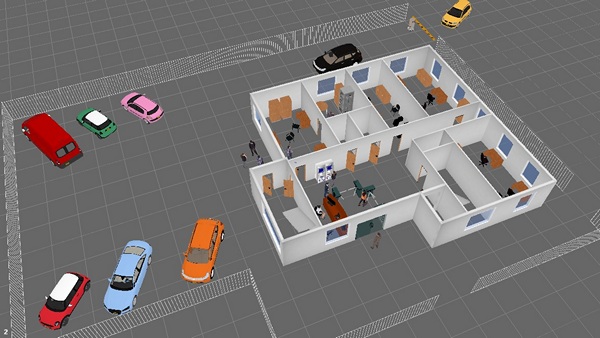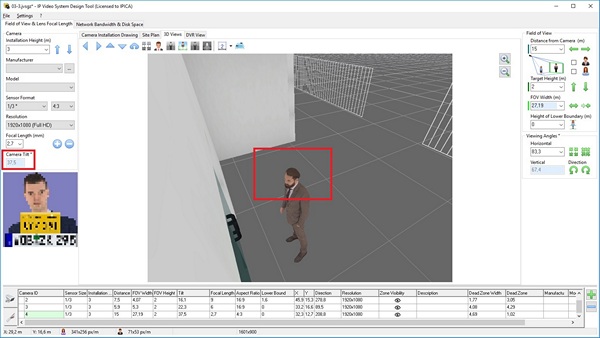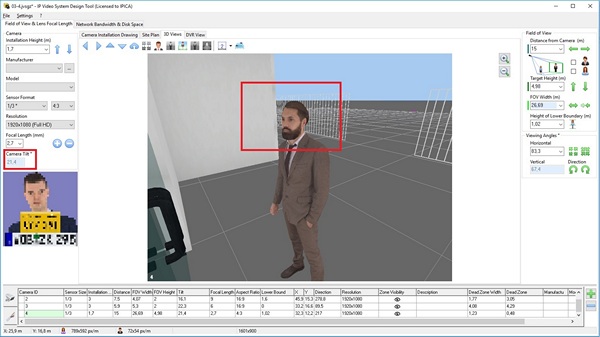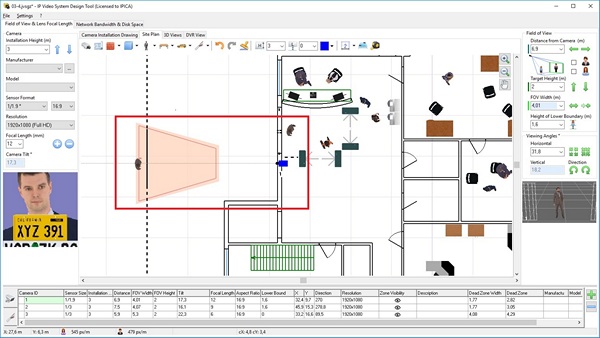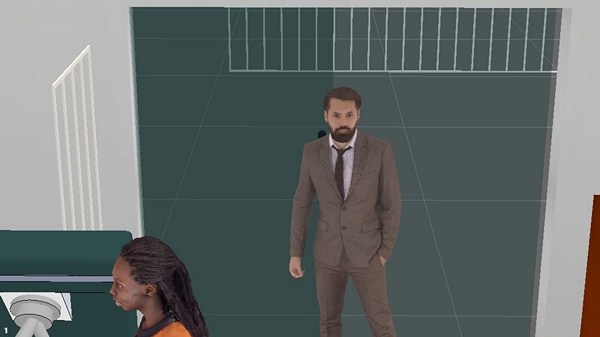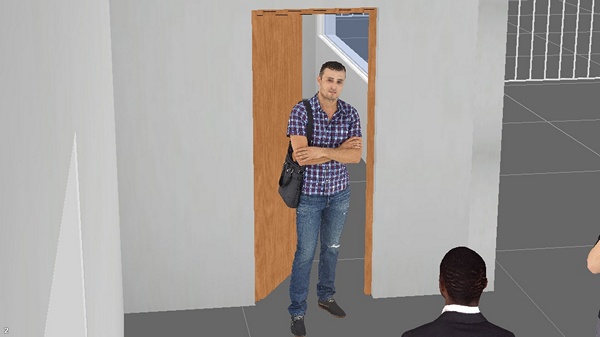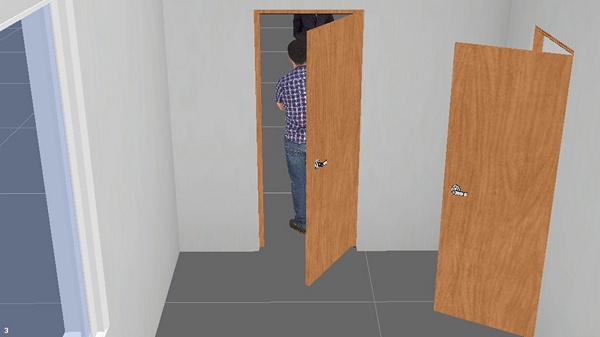Case #3 — How to choose the location and the technical specifications of the video surveillance camera for positive photo identification of a person.
Identification in CCTV
When planning a video surveillance system, two of the most important tasks related to visitor identification are ascertaining (determining the distinctive traits of an unknown person) and recognition (establishing a known person’s identity using his/her distinctive traits). This is an imperative CCTV system feature for commercial facilities, office buildings, shopping and recreation centers, schools and day care centers, and residential complexes as well.
This includes the layout of the building with the location of main and emergency exits as well as the height of ceilings or suspended ceilings (such as Armstrong or trimmed ceilings).
-
Justify the choice of camera locations for the main and service entrances of the building.
-
What are the camera specifications and location characteristics that most impact the probability of positive identification?
Solution:
The goal of surveillance is to obtain a high-quality photo of the unknown person.
In order to achieve this, it is necessary to consider several factors.
Pixel density (spatial resolution)
It is important that the resolution of the image is adequate to determine a person’s specific traits, allowing the trait information to be used as evidence in any post-incident investigation. In order to solve the task of identification, it is necessary to select the right evaluation criteria. There are varied opinions, both here and abroad, as to which pixel density is best for identification of a person. However, you definitely cannot rely solely on the spatial resolution of the image transmitted by the camera.
Here is a typical mistake made when positioning a camera for identification purposes:
The location of the camera is incorrect, resulting in excessive pan and tilt inclination. When you need guaranteed identification, you cannot exceed the inclination angle limits of the camera, which include:
-
not more than 30° of tilt inclination, and
-
not more than 20° of pan inclination.
Apart from the above, when selecting the location for a camera that will be used for identification, the typical behavior of the shopper should be considered so that the tilt of the faces on the frame captures would not exceed ±10°-20°. For example, a person will usually look down at his feet when entering or exiting an escalator and will look at the door handle when opening a door. This information is important.
The task of identifying visitors can be solved in various ways.
Identification prior to entry into the building
There must be a balance between two parameters. One involves decreasing the camera’s installation height for integration of a wide-angle lens:
This is possible when using a videophone camera, located generally at face height of an average-sized man. In this case, the recommended pan inclination cannot be met because of the width of the doors.
For another option, we will ID the visitors who are farther away, namely at the gate, using a long-focus lens.
We seem to have met the requirements. But for this particular facility, this solution is not optimal since the person can approach from another side, nullifying our efforts.
In general, attempting to ID visitors who are farther away is not the most practical solution, so it’s best to use another approach if at all possible:
Identification at the entrance of the building
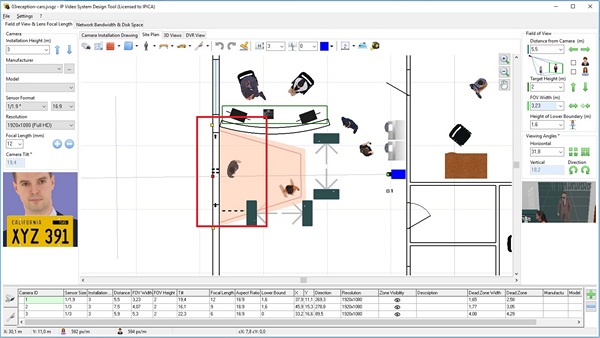
In this case, we’ve used a telephoto lens with a field of view that covers the entire entrance. The location of the camera on this spot, its focal length, and its sensor resolution maximize the probability of successful identification, so this seems to be the preferable option.
Video tutorial Planning and Design of Face Recognition Systems in IP Video System Design Tool 11
Identifying people at emergency/service entrances is different, since these entrances are frequently used by local employees. This simplifies identification and reduces the requirement for pixel density, as well as the limitations of pan/tilt inclination angles. It’s important to note that while the task of the main entrance camera is to register people coming in, when you’re considering the service entrance, it’s the people exiting the building that require the most attention. For this reason, when planning surveillance camera locations, it may be necessary to install two cameras – one for recording the entering employees and one to record those who are leaving the building.
Conclusions
-
Four main parameters play a major role in identification:
-
Pixel density
-
Camera tilt
-
Horizontal angle between the camera’s optical axis and the face of the person being recorded
-
Face inclination angle
-
-
In order to ensure an acceptable level of positive identification, it is necessary to:
-
Select the sensor resolution depending on the number of pixels that will be occupied by the face on camera in accordance with one of the following standards/recommendations: R 78.36.008, EN 62676-2015 or similar British/ Australian norms.
-
Ensure a low camera tilt inclination by means of:
-
-
Decreasing the height of camera installation, and/or
-
Increasing the distance from the point of surveillance to the subject, with a corresponding increase in the focal length of the lens.
-
-
-
Ensure a small horizontal angle between the optical axis of the camera and the face of the subject by selecting the right location for the camera.
-
Consider the typical behavior of visitors when choosing the camera location to minimize the angle of inclination of the face of the person
-
Download a trial version of IP Video System Design Tool software; download a project file for this article [1 MB] , and try to find an optimal camera locations yourself.
Installing CCTV in a Retail store | How to install CCTV cameras in corridors





